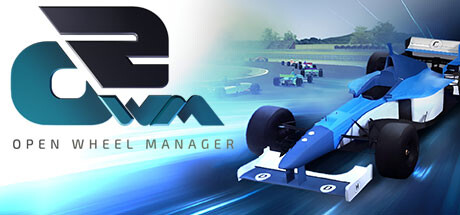Welcome to ‘Open Wheel Manager 2 – From Zero to Hero: A Beginner’s Guide to Omega GP’! In this guide, we’ll show you how to understand the game mechanics of the racing team Omega GP, even if it is underfunded and run-down. We’ll show you how to turn this team from zero to hero!
The first years (1 + 2 + 3), cut costs
First of all, it should be noted that the money is not inflationary, and thus must be managed very well.
Points to consider in the first season are as follows:
- With three negotiations, immediately request an engine manufacturer for the coming season, either as a partner or as a sponsor. We repeat the same with the three best manufacturers. It is an absurdity what the engines cost in the first season.
![Open Wheel Manager 2: From zero to hero [Omega GP] - The Beginning](https://gamepro.tips/wp-content/uploads/2023/11/88951BB73C39E43A6FAD3C0BF2F3F4A04143DE9E-1.png)
- Don’t repair a single engine, it simply doesn’t do any good, you don’t score any points, nor do you get better placings because of the bad car, but you waste millions. Finishing the season in twelfth place isn’t incredibly annoying with all the money saved.
- After a couple of races, the previous drivers are dismissed, depending on the start of the game (random), these are sometimes weekly charges of over 600,000 USD. In return, you hire drivers who bring the money, the parameter in the driver search set accordingly so. In the first year there are always three such drivers. You take the financially strongest and hire them for the current season. As soon as negotiations are left, you extend the contract of the new drivers, they also pay in the second season, although somewhat less.
![Open Wheel Manager 2: From zero to hero [Omega GP] - The Beginning](https://gamepro.tips/wp-content/uploads/2023/11/A79AE6C15FFBB6441E1B8B34B542CA6D2BF25876-1.png)
![Open Wheel Manager 2: From zero to hero [Omega GP] - The Beginning](https://gamepro.tips/wp-content/uploads/2023/11/E6DEA651F0837B5B5A3A0B8B3BC769B2C383988A-1.png)
- Hiring young drivers who are already developing the speed attribute (2-3) is optimal, as they may well develop steadily over the two years.
- The remaining negotiations are used to hire sponsors, first for the current year, then for the next year. It makes less economic sense to negotiate both years at once, more about that later.
- In the first year, the focus is on improving the components of the car, not yet the chassis, which is reseted every year and is of no use in the current season.
- Finishing last in the season is not a shame, but creates unexpected opportunities in the form of money and steady cash flow, which will be put to good use at a later date.
![Open Wheel Manager 2: From zero to hero [Omega GP] - The Beginning](https://gamepro.tips/wp-content/uploads/2023/11/BD8D040DA992233FDAC855862F2EB12C8BD508E6-1.png)
- Already in the first season, even though you paid severance pay for the old drivers, you can see how the effectiveness of making money starts. A profit of 7M instead a loss of 30-50M. And the best thing, own shares will never be sold.
![Open Wheel Manager 2: From zero to hero [Omega GP] - The Beginning](https://gamepro.tips/wp-content/uploads/2023/11/E399449EE167AE5CB38D1CD333891DC22C5F2EA6-1.png)
Now the tricky days begin, if you have landed a very good engine manufacturer, you can now repair the engines for free after each race and focus on the chasis.
And importantly, always choose the maximum contract time frame!
![Open Wheel Manager 2: From zero to hero [Omega GP] - The Beginning](https://gamepro.tips/wp-content/uploads/2023/11/B4EBAEE1D5248F39744EA8A92D9D3A951C2DE56E-1.png)
What should I do in the second year:
- In the second year we pick new drivers for the upcoming season, put preferences on speed and/or feedback. But it is important now that we do not immediately extend these drivers to another year! We must first extend the drivers in 1998, at the beginning of the season. Because only then we have the possibility to keep them longer than one more year.
![Open Wheel Manager 2: From zero to hero [Omega GP] - The Beginning](https://gamepro.tips/wp-content/uploads/2023/11/E0EAE20233A853D29D487D5E5851FCFB823FDBCF-1.png)
- This is due to the game mechanics reputation and the lack of money, if a pale, which gives us money, so that he can drive, after two years for another year with us should drive, he wants to have exorbitant sums, which the racing team can not offer, thus the negotiations fail in any case.
- But if we offer the driver in 1998, when he is still in his first year, but he was already hired last year, a contract extension before the start of the race series, he will extend for another three to four years at a very low salary. During this time, he can develop into a driver who costs 100 times less a equal stats driver.
![Open Wheel Manager 2: From zero to hero [Omega GP] - The Beginning](https://gamepro.tips/wp-content/uploads/2023/11/6AF4896A66AC353AEFF420E4BA9BCF13F073E945-1.png)
Now it pays to repair the cars at over 60%, keep engines at 100% and bring the chasis to 3-5 if possible. The effort will be rewarded.
![Open Wheel Manager 2: From zero to hero [Omega GP] - The Beginning](https://gamepro.tips/wp-content/uploads/2023/11/203184120277A6BF98E809C3BCE2EE9CBAF63FCC-1.png)
Having done well in the thirdyear, it should be reflected in the results. Then in year four we really attack.
![Open Wheel Manager 2: From zero to hero [Omega GP] - The Beginning](https://gamepro.tips/wp-content/uploads/2023/11/F8CD2D013BFB6EE263A719517FAB3DA9A78AF01F-1.png)
The balance sheet is a bit difficult to read, but the wind tunnel was started in year three, the necessary remaining capital was borrowed (23.81M), but the building has already been financed (-16.07M) and the loan payments settled (-2.30M). Thus, the profit in the third year is an adjusted +11.68M.
Mind you, a relatively large amount was paid for car components (-3.13M), since the goal was to get to 10th place or higher, so that the better advertising partners could come from 1999 on.
And that wraps up our share on From zero to hero [Omega GP] – The Beginning. If you have any additional insights or tips to contribute, don’t hesitate to drop a comment below. For a more in-depth read, you can refer to the original article here by bosslandx, who deserves all the credit. Happy gaming!
